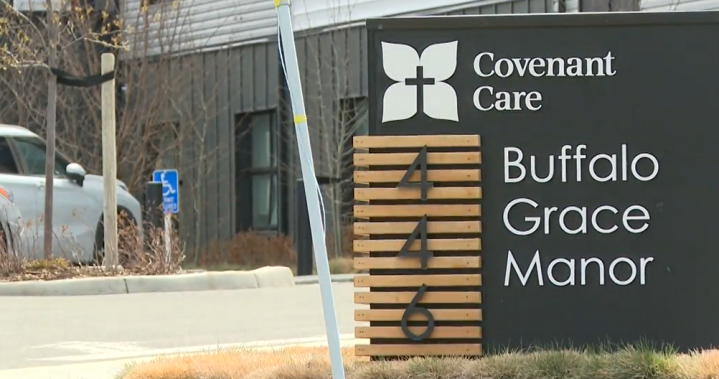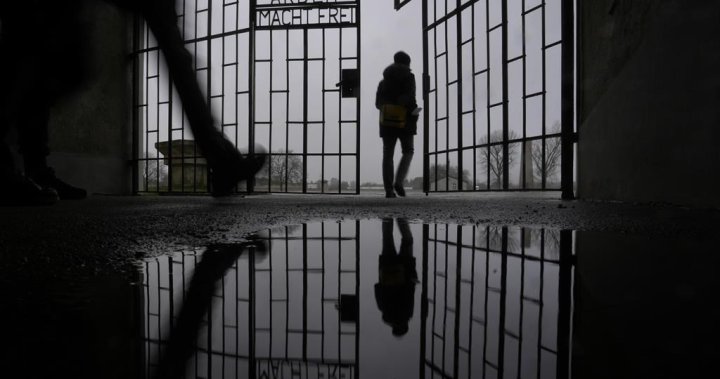With Canada’s wildfire season underway, firefighters are hoping the weather will aid them in their efforts. But some Canadian provinces are looking to expand upon a different strategy: firefighting at night.
Nighttime firefighting operations have been common in other countries such as Australia and the United States, but it remains rare in Canada. While experts believe it can have advantages, they say firefighting at night is logistically difficult to do.
In a statement, a spokesperson for the BC Wildfire Service told Global News that “overnight fire spread events” are becoming more common throughout North America,” adding that the “BC Wildfire Service utilizes night operations when and where necessary.”
Alberta has also been using nighttime firefighting and has partnered with B.C.-based aviation company Talon Helicopters.
“This year we have new strategies and are implementing new tactics, including having firefighters prepared and positioned earlier for wildfire response,” Alberta Wildfire spokesperson Melissa Story said in a statement.
“We are leveraging night operations for the third season with additional aircraft added to the fleet. This initiative allows us to fight fires in the overnight hours while wildfire behavior is typically more subdued.” Story also said such operations include night-vision helicopters.
Jarrett Lunn, chief pilot at Talon Helicopters, said: “There are some challenges to working at night, but there’s also a lot of benefits where the temperatures are lower, the humidities are typically higher, and often the winds are lower at night.”
Lunn added that nighttime firefighting can also help save precious time, preventing overnight spread.
The email you need for the day’s
top news stories from Canada and around the world.
“If the fire started from a lightning strike, in the dark, traditionally you would have to wait six or seven hours for the first helicopter the next morning to get out to it. Now we’re able to attack a fire immediately when it starts, if we’re prepared and in the right place,” he said.
But despite its efficacy, nighttime firefighting is quite rare in Canada.
“(During wildfire season), there might be several hundred helicopters fighting wildfires during the day in one particular day across Canada. At night, there’s two or three,” Lunn said.
He added this was because it is challenging to fly at night, and it can also be logistically and financially difficult to adapt and retrofit helicopters.
“We need to fully modify the helicopter to make it night-vision-goggles compatible so we can fly at night,” he said.
“You would take a regular helicopter, and… modify all of the internal and external lighting of the helicopter to make them compatible with the night-vision goggles that we wear on our helmet.”
Getting government approval for those modifications can take a long time, in addition to the several years it can take to retrofit a single helicopter — during which time it is parked and not generating money for the aviation company that owns it.
Lunn said provinces would also need to set up nighttime operations.
“(This would include) nighttime aircraft dispatchers, nighttime aircraft flight following services, nighttime air crew… wildfire crew who travel in the helicopter to and from the fire. And even finding fuel at night for the helicopters. Some smaller airports don’t have a 24-hour service. So, we need to find airports at night where we can do self-serve fuelling,” he said.
The BC Wildfire Service said pilot safety was one of the biggest reasons nighttime firefighting was deployed sparingly.
“Nighttime firefighting introduces additional safety considerations to an already dangerous job,” a spokesperson said. “Night operations are considered when the safety of fire line personnel will not be compromised and when it is required to meet the objectives outlined in the fire-response plan for that incident.”
Meanwhile, the federal government recently said it was exploring the possibility of using drones to fight wildfires at night.
“There is actually one… company that I’ve met that is looking at conducting research right now on a pilot project now to use drone technology, using swarming, to fight wildfires. So, imagine being able to put out a fire at night in West Kelowna,” Emergency Preparedness Minister Harjit Sajjan said during a press conference in Ottawa earlier this month.
Wildfire season got off to an early start in Canada this year after the warmest winter on record.
Firefighters in B.C. and Alberta continued to tackle wildfires throughout the weekend. The Northern Rockies Regional Municipality confirmed four homes in the Fort Nelson, B.C., area have been destroyed by the Parker Lake wildfire, and that 10 other properties have been impacted by the blaze.
A wildfire burning near Fort McMurray in northeastern Alberta is now classified as “being held.” In an update at 7 p.m. Sunday, Alberta Wildfire downgraded the status of the wildfire, which was previously classified as out of control. The fire did not grow on Sunday, and it was 19,451 hectares in size.
© 2024 Global News, a division of Corus Entertainment Inc.




